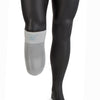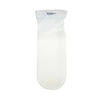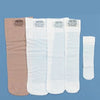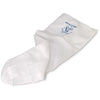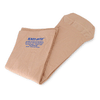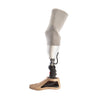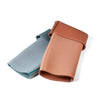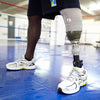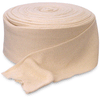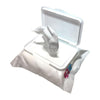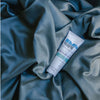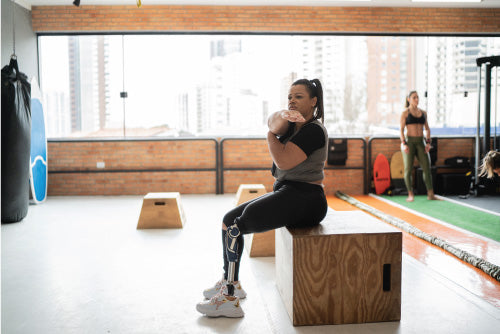Prosthetic Stump Sock Material Primer
Prosthetic Textile Materials
The majority of prosthetic socks are a blend of several performance fibers that can offer the best comfort, moisture & odor management in a variety of conditions. Steer clear of your average, cotton "gym" sock & look for the following materials.
Acrylic - man made, flexible fiber that can accommodate many different residual limb shapes and sizes; substitute wool for those who are allergic. Microfiber acrylic will feel the softest.
Elastic Top - stretchy man made material used to keep socks comfortably in place. All amputation levels should consider the Knit-Rite Hugger Top or Soft Sock if you experience your socks rolling down. In 2016 Knit-Rite redesigned their Soft Sock line to take full advantage of the benefits offered by incorporating an elastic top.
Lycra - another material with long-lasting stretch to aid in fit, comfort, & flexibility
Nylon - durable synthetic fiber often used to reinforce areas prone to wear
Polyester - comfortable synthetic fiber with superior moisture wicking ability. The higher the denier, the softer the feel.
Spandex - resilient, stretch fiber that dries quickly
Wool - Cushiony natural fiber that also effectively wicks away moisture. Merino wool is made from the finest fibers for a soft, no-itch texture.
Cotton - easy to care for, can be bleached. Often blended with Coolmax or X-Static as part of the material fiber mix to offer odor and moisture management benefits.
CoolMax™ - new materials like Invista's CoolMax can pull moisture away from the skin and help regulate prosthetic socket temperatures, while also keeping you drier. This fiber can keep your residual limb cooler in the summer and warmer in the winter. Numerous manufacturers of socks now use this material in many of their products.
X-static® - made with a layer of pure silver which naturally inhibits the growth of odor causing bacteria.
Features
Anti-microbial - fights odor-causing bacteria & microorganisms
Rounded Toe - prosthetic socks that have a visibly rounded toe are when lying flat will be easier to pull on & contour better
Flat Seams - smooth stitching, especially on the toe minimizes irritation & painful pressure points
Seam Free - produced with specialized knitting machines, can create a luxurious socks for sensitive skin. Seamless socks are really important because they prevent excessive pressure along the cut end of your bone.
Padding - some below knee amputee socks offer thicker padding over the tibia bone
Reinforced Top - added layers & stitching along the top area will help resist abrasion & fraying that result from frequent use
Gel - Prosthetic Socks and sheaths are also available with gel attached to, or sandwiched between fabric. The material is usually a medical grade mineral oil gel or silicone that provides excellent cushioning, pressure distribution and reduced friction. The thickness and stiffness of the gel will dictate the cushioning qualities of the prosthetic sock.














































